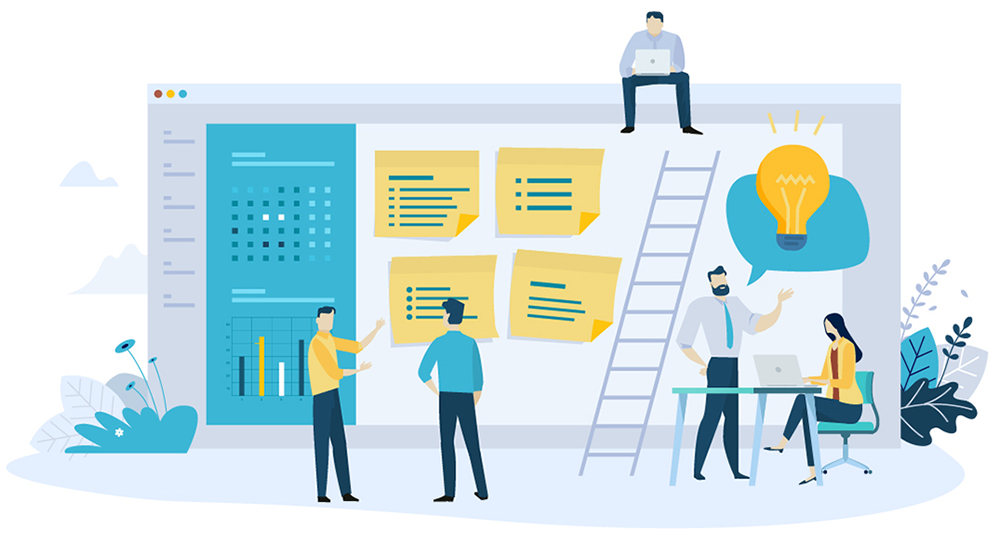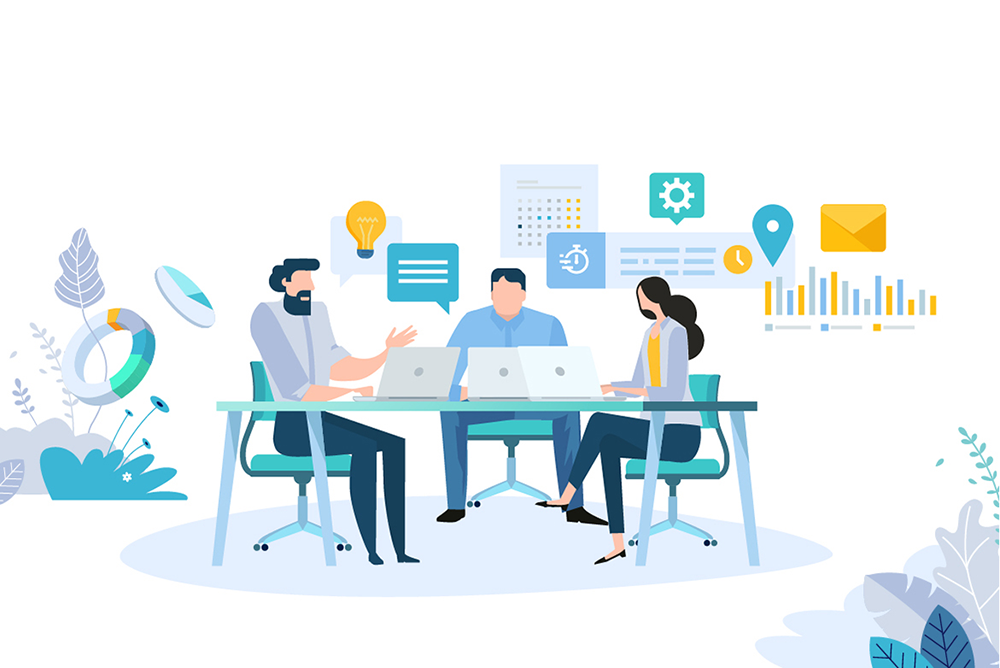How EOS Helped Us Thrive in 2020
Ryan Frederick | April 6th, 2021

Amongst all the changes and turmoil in 2020, we’ve had a good year at AWH. We continue to grow our team and engage with interesting clients on creating interesting software products and solving data challenges. One of the reasons we’ve were able to continue to grow in 2020, despite the challenges it has thrown, is because of EOS (Entrepreneurial Operating System).
2018 – The Learning Curve
We started implementing EOS in 2018 when we realized we weren’t as focused and organized as we could be. Meetings were being run differently across the company and we didn’t really have companywide objectives that were known by the entire team. We had some loose core values, but they weren’t engrained in who we were and how we operated. The challenges we were experiencing risked us continuing to grow and perform as well as we wanted. We decided to implement EOS after evaluating several methodologies of how we would fundamentally operate the company.
When we started to share with people outside of the company that we were going to implement EOS they strongly suggested that we hire an EOS implementation consultant to help us with the process. We evaluated it and decided not to because we knew we would need to be patient and to take it slow whether we did it ourselves or hired a consultant. We also thought we would get a lot of value out figuring out on our own rather than having someone help us shortcut the process. We were more intent on learning, iterating, and adjusting based on our own experience then being disconnected from the challenges of implementing it. This isn’t to say that EOS implementation consultants aren’t effective and right for some companies. We just felt it would be best for us to implement it ourselves and that we had the intention and discipline to do it.
2018 was a learning period for us around EOS. We read books and other materials we could find, and we asked the team to read about and familiarize themselves with the processes and structure we were about to implement. Of course, there were a ton of questions and skepticism. Is this really going to help? Why do all meetings have to be conducted the same way? What the heck is a people analyzer and am I going to be analyzed? We didn’t have all of the answers and we asked the team for some grace as we figured it out. We were committed to making it work.
2019 - Implementation
As we started to implement some of the components of EOS late in 2018 and into the early part of 2019 things felt even more disjointed. We were starting to leverage EOS, but we were still mostly doing things the old ways. Even with the discomfort, which we knew was likely, we moved forward by initially implementing the broadest EOS components first. We established our VTO (Vision Traction Organizer), EOS’s version of who are you, who do you serve, and why? We also defined our core values which proved immensely important as we worked through implementing the rest of EOS, especially the people aspects. The VTO and core values work took a few months. We knew this would be the foundation of our EOS implementation and would be the foundation for the company for next several years or more. We took it very seriously and slowly. We didn’t force any artificial timelines or milestones. If something as part of the VTO or core values didn’t feel, look, or sound right we just kept working at it. We gave it time to breathe until we were confident we had nailed it.
Once we got through the VTO and core values we moved on to conduct some of our meetings under the EOS format, referred to as an L10. We did a few so that we could work through the kinks without subjecting our entire team and meetings to the awkwardness of a new format.

L10 meetings have a very specific structure including time allotted to various sections of a meeting. We struggled at first. The meetings were choppy and inefficient. It probably took us 4-6 weeks for the early L10 meetings to figure out how to do meetings well inside of the structure. But we did figure it out. The team showed great commitment to work through the awkward stages, which is part of learning anything new. Once we were performing the initial meetings well as L10’s we started conducting more of our meetings as L10’s over the course of 2019. Each new meeting as an L10 went better than the last and by the end of the year we were conducting all regular meetings as L10’s as part of EOS.
2020 – AWH on EOS
The timing of things turned out to serve us well when we had to adjust to the COVID-19 pandemic this year and work as a fully remote team. We had spent enough time understanding and implementing EOS that we didn’t skip a beat. In 2020 we fully implemented EOS with the remaining pieces of the people analyzer and conducting our quarterly and annual strategic meetings as L10’s.
EOS has proven to provide the improved communication and alignment we were hoping for. Our team has never been more efficient and effective while also being focused on what matters most at any given time. The EOS structure forced us to ensure we know what we want to accomplish and when, to identify the issues standing in the way, and getting the team all on the same page. EOS truly has become an operating system for us on which to run the firm. I’m skeptical of most methodologies because they typically don’t provide the promised value. Poor execution is probably a key part of the lack of value, but that is also why EOS has been so effective for us. EOS is structured in a way that unless you ignore the fundamental principles and just don’t do them, you will get at least some value out of EOS.
If your company isn’t communicating, collaborating, or performing as well as you think possible, I encourage you to consider EOS. Start by reading Get a Grip by Gino Wickman and Mike Paton.
Originally published by Columbus Business First - Our journey with EOS, and how to make it work for you.
